
Losing weight is more than just counting calories and exercising. In this article, I’m going to share simple, daily habits that’ll help you lose weight faster and keep it off, all backed by science.
Incredibly easy yet solid advice from a weight loss expert who knows just what works to lose weight and keep it off for the long term.
These weight loss tips are not only simple and doable but insanely effective in losing weight the healthy way and improving one’s health.
We’ve all been there, left staring sadly at the tiny portions on our plates and pretending we are satisfied.
What media tells us is the best way to lose weight is constantly changing.
There’s nothing worse than dedicated months of misery only to gain the weight back.
But don’t worry, we’ve got your back.
Let’s take a look at the 12 best weight-loss tips that will help get you crush those weight-loss goals.
12 Best Weight Loss Tips

You’ll also like:
Want To Lose Weight Faster? Science Says Do These 3 Simple Things Daily
How to Lose 10 Pounds In a Month: 10 Science-Backed Tips
1. Set An Attainable Weight Loss Goal
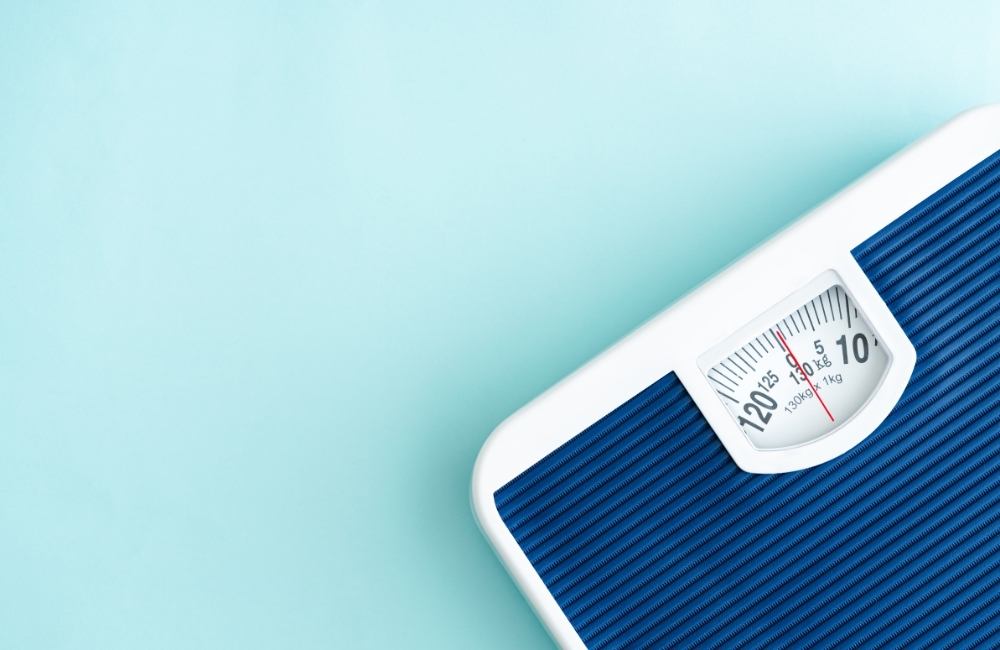
It’s important when embarking on a weight loss journey that we’re being realistic.
Make sure to set attainable weight loss goals.
This does not mean your goal of losing 50 pounds is not attainable but don’t expect to lose that much weight in a few short months.
If you feel like your goal weight is unattainable, break it down into more modest weight loss goals.
For example, instead of a few months, set a goal to lose 50 pounds in a year.
If that feels attainable but overwhelming you can break it down into smaller goals.
Choose a short-term goal for a more modest weight loss.
This short-term goal can be 8 to 15 pounds of weight loss in 1-3 months or whatever you feel is feasible for you.
It’s important to note that small change is still changed toward better health.
2. Make a Plan
You can use a journal to log your meals, track your activity and even track your behaviors.
Tracking these things in a journal can help you modify your behaviors and adjust to better meet those long-term goals.
You can also use your journal to track setbacks and how you overcame them.
Track when you met a small goal or feel you have successfully implemented a behavioral change into your new lifestyle.
It can be valuable and motivating to document your journey so you can look back after reaching your long-term weight-loss goal and see how far you have come.
3. Calorie Intake Isn’t Everything
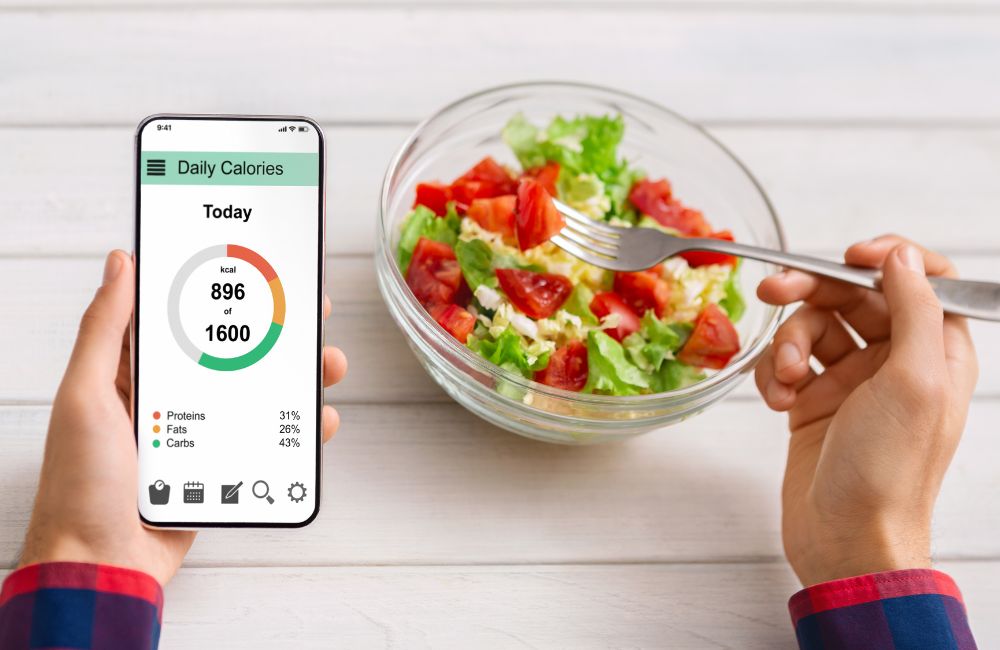
It may sound counter-intuitive but it’s true, calorie intake isn’t everything.
Although it is required to have a calorie deficit in order to lose weight, it’s more than just counting.
100 calories of skittles are not the same as 100 calories from broccoli.
Choosing high-quality foods along with paying attention to your calorie intake is key.
Fruits and veggies will naturally contain fewer calories and are higher in nutrients.
They also contain high amounts of fiber which can help you feel fuller and thus eat less.
Skip the tedious calorie counting. Instead, focus on eating more whole foods such as fruits, vegetables, whole grains, and lean meats in your meals.
This removes the need for a calorie count but still helps to create a calorie deficit in a healthy way.
4. Drink Green Tea
Tea like green tea has a type of flavonoid called catechins that may boost your metabolism. It also helps your body break down fats more quickly.
Green tea also contains caffeine, which helps increase your energy use, causing your body to burn more calories.
The presence of both catechins and caffeine strengthens the effects on weight loss by burning calories and fat.
Replace your morning cup of coffee or that afternoon energy drink with a nice warm cup of green tea.
5. Avoid White Foods
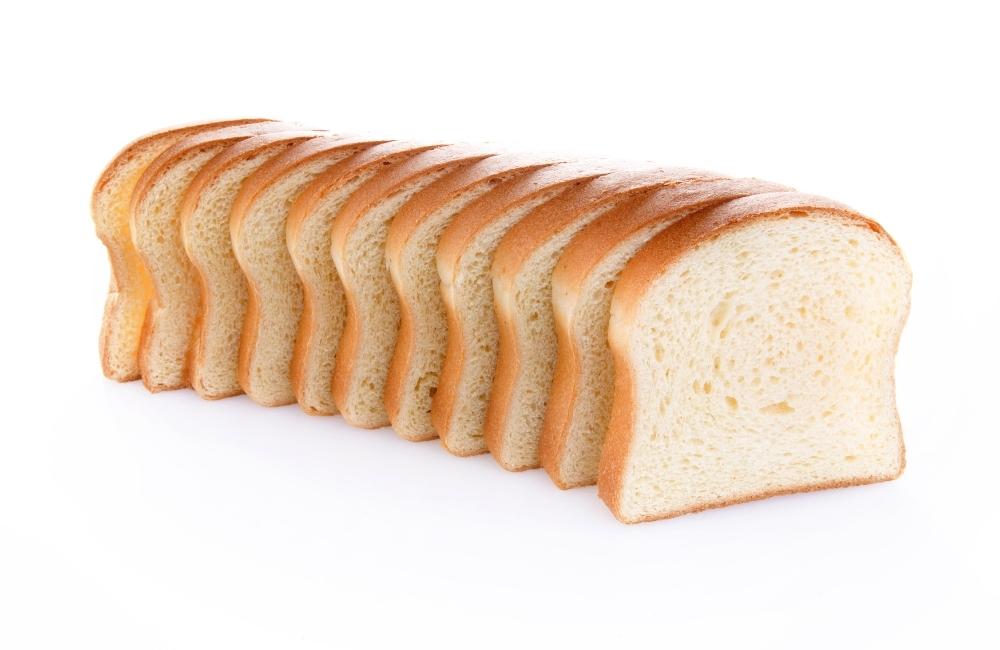
You are likely familiar with highly processed carbs such as white bread and pasta.
A diet high in these carbs is often associated with weight gain so it’s recommended to limit these foods to moderation.
This means only having them occasionally.
Instead of choosing white breads or white pastas, opt for whole-grain or even vegetables instead.
Whole grains, such as whole-grain bread, brown rice, quinoa, and oats are good sources of fiber.
The more fiber you include in your diet the more satisfied you will feel after a meal.
This will not only allow you to eat less during your meals but it will help to keep you feeling full for longer.
Choosing veggies as an alternative to pasta or bread also helps to boost fiber intake.
If you haven’t already, give zucchini noodles a try or riced cauliflower.
6. Eat More Protein
Lean protein is one satiating nutrient that’s effective for weight loss and getting in shape.
It helps build lean muscles, speed up metabolism, and bring satiety.
This is because when you eat protein, your body burns up to 30% of calories from the food just to digest and metabolize.
Protein is one important nutrient that promotes weight loss and belly fat loss.
Swap out your fatty cuts of beef for lean or choose chicken, turkey, or fish instead.
7. Eat More Healthy Fats
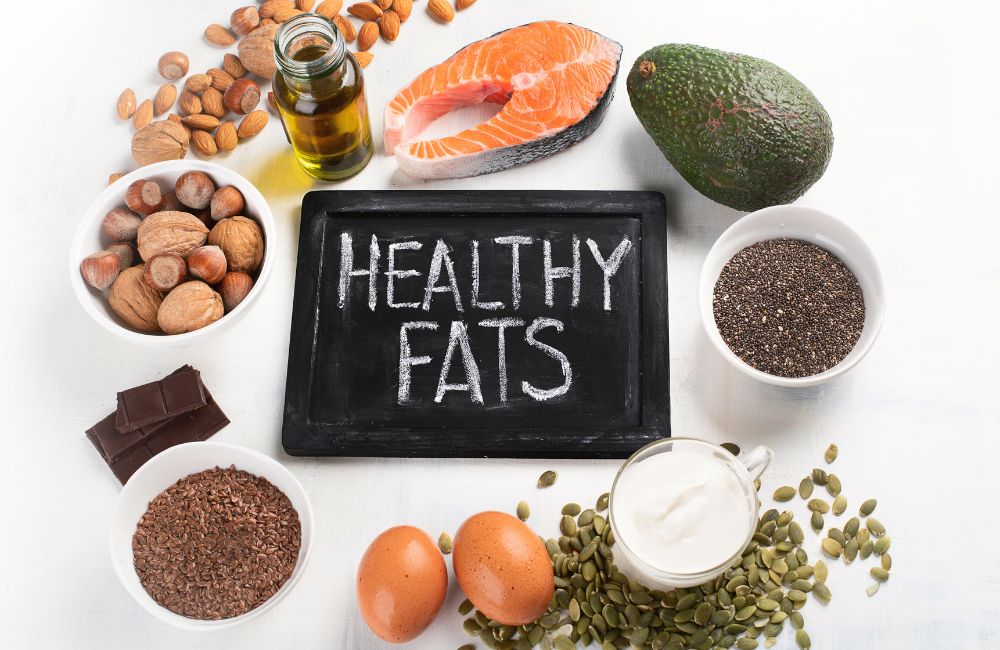
Fats are an essential nutrient for your health, metabolism, and weight loss.
Adding more healthy fats to your diet can increase your satiety and contribute to weight loss.
This is because your body takes longer to digest fats than protein and carbs. Put simply, it’s a fat-burning food.
Having fats in your meals is a great way to manage your portion and appetite, which also help you avoid overeating.
But not all fats are created equal.
Healthy fats mainly come from plant sources such as olive oil, avocado, nuts, and seeds as well as animal sources like seafood.
Be sure to add protein to your meals throughout the day.
8. Eat Non-Starchy Vegetables
All vegetables are good for you however, there are some that we need to be more mindful of how often we eat due to their high starch content.
Starches are just another form of carbohydrate that can increase body weight if consumed in abundance.
Starchy vegetables include all potatoes, peas, corn, lentils, and squash.
These starches are still healthy additions to a meal and, like all vegetables, aid in digestion but should not be consumed at every meal.
Instead, choose more non-starchy vegetables. These include cucumber, broccoli, kale, swiss chard, asparagus, etc.
You can enjoy these vegetables in abundance without worrying about eating too much carbohydrates.
9. Try Intermittent Fasting
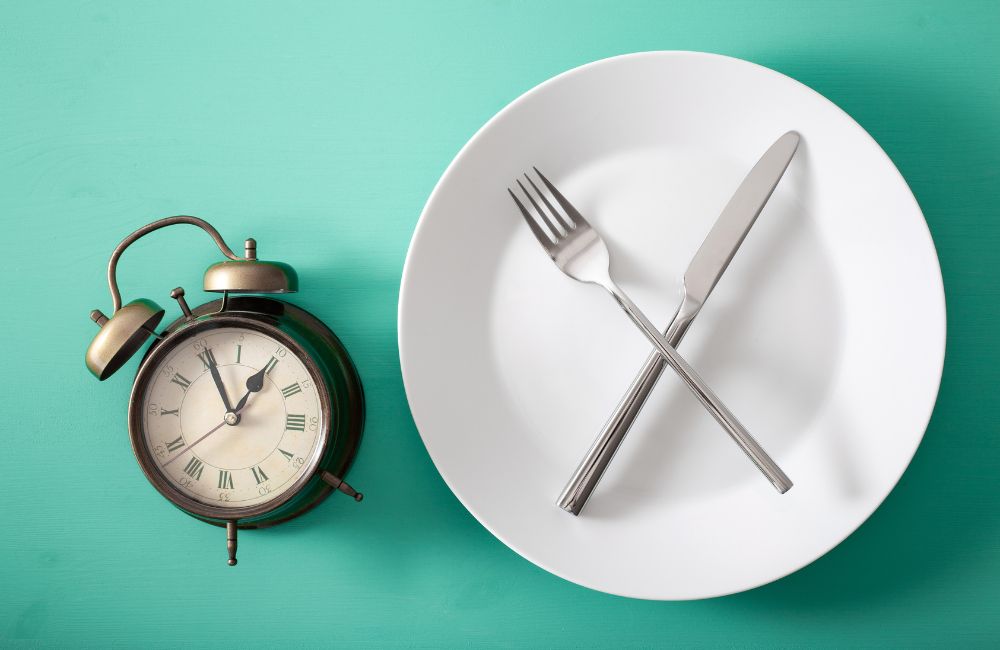
If you’ve been fearful of trying intermittent fasting in the past, it might make you feel better to know that you’re already doing it!
Every time we go to sleep at night, our body fasts until breakfast the next morning.
That is why it is called breakfast, break-fast.
Intermittent fasting is simply an adjustment of the times that we allow ourselves to eat.
You can choose to only eat between the hours of 12 and 8 pm or you could choose to no longer eat after 6 pm in the evenings.
The reason intermittent fasting has gained such popularity with weight loss is because it helps us to prevent over-eating.
If you shorten the time of your food intake during the day, it’s likely you won’t consume as much as you would have otherwise.
Research has shown a strong connection between intermittent fasting with successful weight loss. It’s shown that it may also lead to improved insulin sensitivity and blood sugar levels.
10. Exercise for Weight Loss
Exercise is a big component in losing weight.
Regular physical activity can increase your muscle mass and bump up your metabolism.
A well-functioning metabolism means burning more calories at rest.
Whether you prefer to hit the treadmill or the weight room for your workout, exercise can help to create a larger calorie deficit. It consequently leads to an increase in the amount of weight you are able to lose.
What’s more, research shows that when you combine cardio with strength training, you naturally lose more weight, faster.
This is from building more lean muscle mass, burning calories, and burning fat.
11. Track Body Fat Percentage, Not Just Weight

As mentioned above, the scale does not always reflect all our hard work.
This can be discouraging for many people.
A lot can be going on in your body while you are working towards your goal weight that may not show with immediate pounds lost.
Sometimes you are holding onto water weight from a salty meal or your scale is not calibrated correctly or on a flat surface.
This is especially true when adding in regular strength training.
Muscle is denser than fat therefore, the scale doesn’t always reflect when we are replacing it with muscle mass.
This change can be hard to see on the scale but it plays a huge impact on your overall health.
The more muscle mass you have, the more calories you will burn throughout the day and the easier it is to obtain healthy body weight.
It’s also important to mention that weight is not always a good tool for determining health.
A primary example of this is body mass index (BMI).
This is a tool that uses your height and weight to determine your range between underweight and obesity.
Unfortunately, because we all have varying muscle mass this is not always accurate.
For example, someone who is a bodybuilder may have the same BMI as someone who is obese and both would be categorized as obese due to the BMI range.
This tool does not recognize the difference in body fat and muscle distribution.
Instead, track your body fat percentage.
This will provide you with a clearer picture of your progress.
12. Get Quality Sleep
Adequate rest can be more powerful than most people realize.
This is the time our body uses to recharge and recover.
Poor sleep is not only detrimental to our mood, but it can also be detrimental to our health and weight as well.
If we don’t get enough hours of sleep our body is unable to work as efficiently and may begin to malfunction.
Studies have shown that poor sleep can result in a higher likelihood we will over-eat during the day.
This is a result of our hormones malfunctioning.
Some studies have suggested a noticeable increase in the hormones Ghrelin and Cortisol for those short-duration sleepers.
Ghrelin and Cortisol are responsible for stimulating our appetite.
There is also a decrease in the hormone Leptin which is responsible for telling us when we are full.
